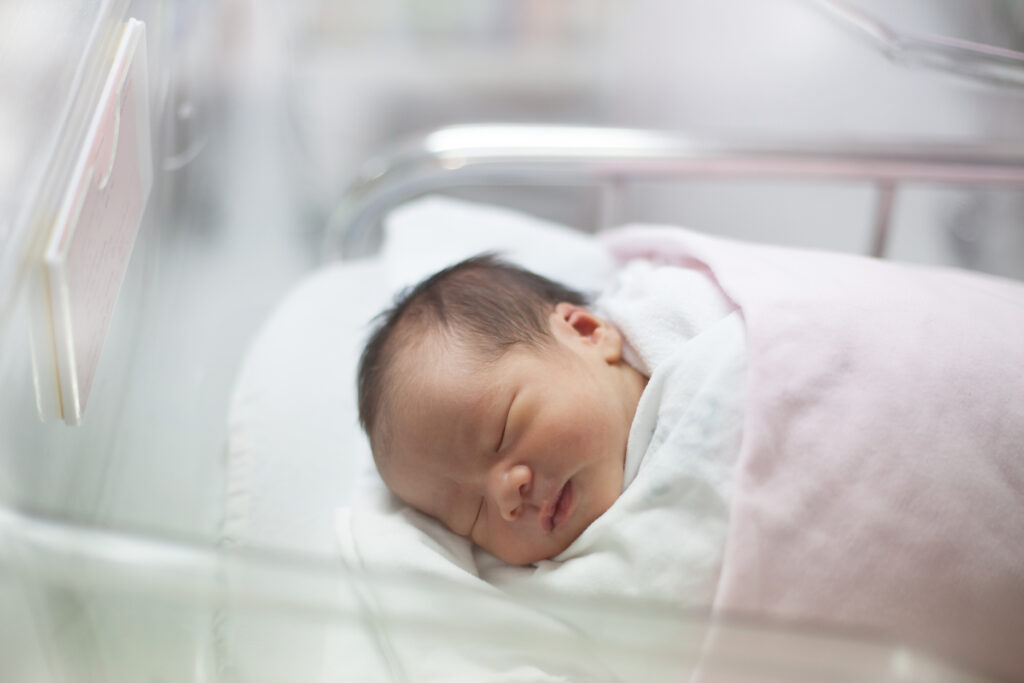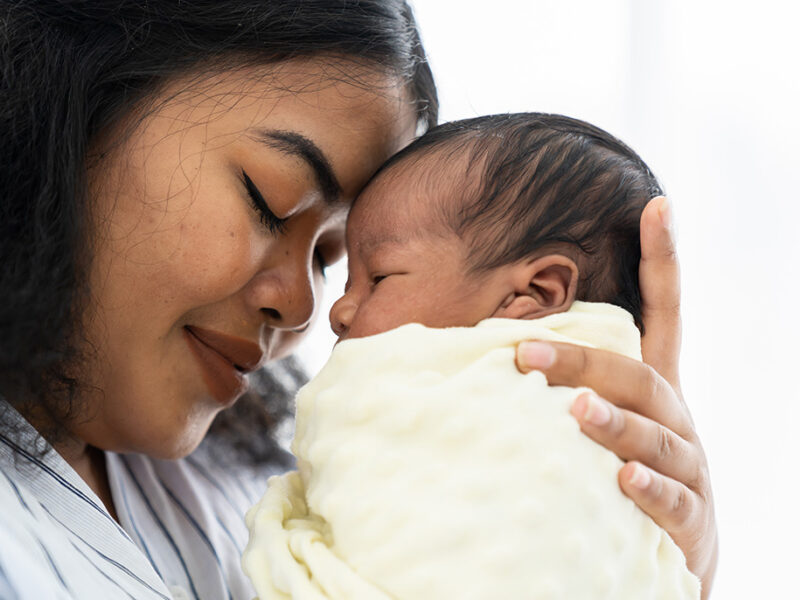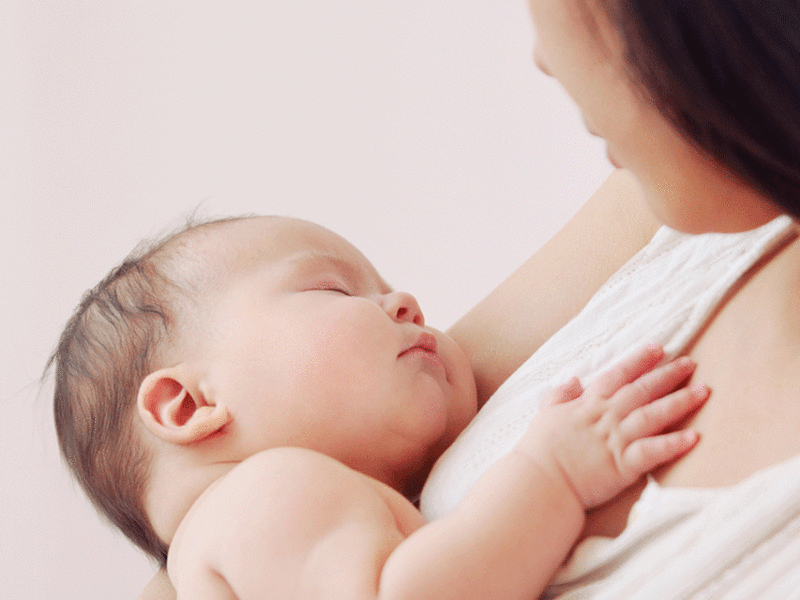Improving UTI Detection in Neonates: Antimicrobial Peptides and Cotton Balls
Improving UTI Detection in Neonates: Antimicrobial Peptides and Cotton Balls https://pediatricsnationwide.org/wp-content/uploads/2024/03/AdobeStock_40952832-1024x683.jpg 1024 683 Katie Brind'Amour, PhD, MS, CHES Katie Brind'Amour, PhD, MS, CHES https://pediatricsnationwide.org/wp-content/uploads/2021/03/Katie-B-portrait.gif
New research sets the stage for less-invasive urinary tract infection identification in neonates 22-37 weeks gestational age.
A team of researchers driving the revolution in urinary tract infection (UTI) identification using antimicrobial peptides (AMPs) has now expanded their focus from adults and children to newborns – including those born prematurely. Their latest study, published in Scientific Reports, lays the groundwork for broadening the use of AMPs, which are part of the innate immune system, into infection detection for this young and fragile patient group.
“UTI is a common comorbidity in babies, and the most common diagnostic test we use is obtaining a urine sample through catheterization, or perhaps suprapubic puncture,” says Tahagod Mohamed, MD, a pediatric nephrologist at Nationwide Children’s Hospital and co-senior author on the recent publication. “Both ways are very invasive and traumatic for both the baby and the family. We need something that can be done with a regular urine sample without the worry of contamination or catheterization.”
The research team collected urine samples from 66 babies born between 2012 and 2016 at 22-37 weeks’ gestation using a simple cotton ball in the babies’ diapers. The urine samples were then tested to determine the types and quantities of different AMPs present.
“The approach we used with cotton balls is probably the least invasive mode possible for collecting urine from a neonate, which if feasible would make diagnosing a UTI in a neonate much easier for the medical team and less risky to the patient,” says Maria Jebbia, MD, a neonatologist at Nationwide Children’s and lead author of the study.
The distribution of AMPs revealed what the team expected: a change in AMP type and concentration as the neonates’ kidneys matured. Urinary concentration of two AMPs, β defense 1 (BD-1) and ribonuclease 7 (RNase 7), decreased as gestational age and birthweight increased.
“Gestational age and birthweight affect kidney maturation, which usually starts around 5 weeks’ gestation, but peak development occurs from 22-28 weeks,” says Dr. Mohamed, who specializes in translational kidney marker evaluation across gestational age for neonates. “We hypothesized that, if these biomarkers are expressed in the urinary tract, their presence and concentration might vary by gestational age because of their different stages of development at birth, and we were correct.”
Concentration was also generally higher in female neonates than in males. The trends reflect similar findings of studies on another AMP, neutrophil gelatinase-associated lipocalin (NGAL), in neonates, which is also higher in newborns than in children and adults and has a similar inverse relationship to birthweight and gestational age. The next step will be to confirm how AMP levels change in the presence of infection.
“We need to develop a solid understanding of normative concentration range for each AMP in healthy neonate, the extent to which AMP levels are impacted by UTI, whether any fluctuations are sensitive for and specific to UTI, as well as reliable platforms for quantitative detection of AMPs,” says Brian Becknell, MD, PhD, a pediatric nephrologist at Nationwide Children’s and research director for the Kidney and Urinary Tract Center. He is co-senior author of the publication and a long-time researcher of AMPs in the urinary tract. “We still have a way to go. However, the successful development of urine NGAL as a biomarker of acute kidney injury establishes the precedent that all of this is feasible.”
Dr. Becknell’s group believes commercial tests for urine AMPs are a viable option for improving the sensitivity and specificity of UTI detection for both neonates and older pediatric and adult patients, for whom AMP-related UTI research is much more advanced.
“We need more sensitive and specific biomarkers for UTI in the neonate population,” Dr. Becknell explains. “Babies can suffer from delayed UTI diagnosis and severe complications, such as pyelonephritis, acute kidney injury and urosepsis. Conversely, overdiagnosis of UTI can result in prescription of antibiotics with potential for nephrotoxicity, alterations in the microbiome and antibiotic resistance. There is a clinical laboratory-based platform for detection of urine NGAL already. It should be quite feasible to develop assays that detect multiple AMPs.”
“While neonates of various gestational ages do not have full developed immune systems, they do possess some degree of innate immunity, whether they are 22 weeks or 40 weeks gestation at birth,” says Dr. Jebbia. “Urinary AMPs are universally present across all gestational ages and could potentially not only be diagnostic but maybe even one day used therapeutically as well.”
Reference:
Jebbia M, Gupta S, Klamer BG, Pavlek L, Ching CB, Mohamed TH, Becknell B. Concentration of novel urinary tract infection biomarkers in neonates. Scientific Reports. 2024 Feb 6;14(1):2996.
Image credit: Adobe Stock
About the author
Katherine (Katie) Brind’Amour is a freelance medical and health science writer based in Pennsylvania. She has written about nearly every therapeutic area for patients, doctors and the general public. Dr. Brind’Amour specializes in health literacy and patient education. She completed her BS and MS degrees in Biology at Arizona State University and her PhD in Health Services Management and Policy at The Ohio State University. She is a Certified Health Education Specialist and is interested in health promotion via health programs and the communication of medical information.
- Katie Brind'Amour, PhD, MS, CHEShttps://pediatricsnationwide.org/author/katie-brindamour-phd-ms-ches/April 27, 2014
- Katie Brind'Amour, PhD, MS, CHEShttps://pediatricsnationwide.org/author/katie-brindamour-phd-ms-ches/April 27, 2014
- Katie Brind'Amour, PhD, MS, CHEShttps://pediatricsnationwide.org/author/katie-brindamour-phd-ms-ches/April 27, 2014
- Katie Brind'Amour, PhD, MS, CHEShttps://pediatricsnationwide.org/author/katie-brindamour-phd-ms-ches/April 28, 2014







